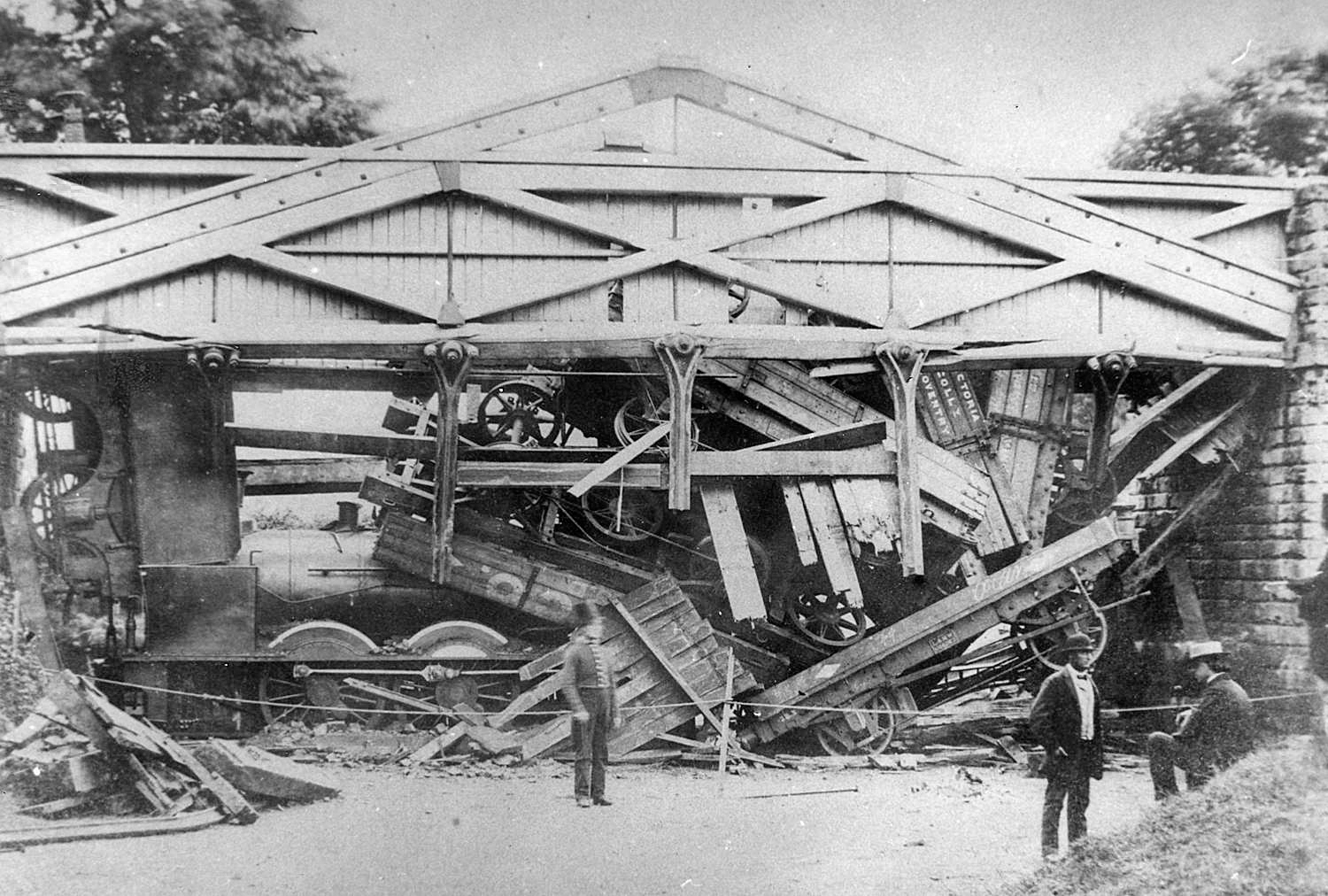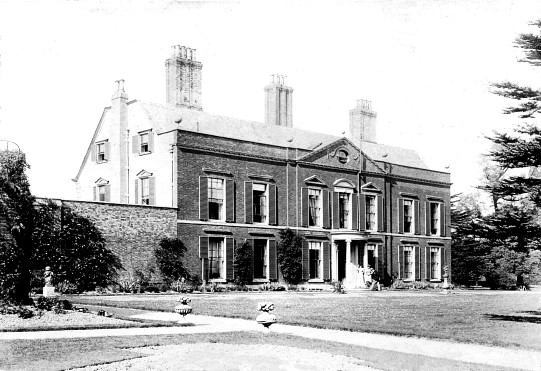Henry Tyler (Conservative Politician) on:
[Wikipedia]
[Google]
[Amazon]
Sir Henry Whatley Tyler (7 March 1827 – 30 January 1908) was a British engineer and politician, who contributed to the Great Exhibition of 1851 and whose collections helped found the



Science Museum
A science museum is a museum devoted primarily to science. Older science museums tended to concentrate on static displays of objects related to natural history, paleontology, geology, Industry (manufacturing), industry and Outline of industrial ...
in South Kensington. His interests were mainly in railways, where he served Inspector of Railways and a railway company director but also in water and iron working. He was also a Conservative
Conservatism is a cultural, social, and political philosophy and ideology that seeks to promote and preserve traditional institutions, customs, and values. The central tenets of conservatism may vary in relation to the culture and civiliza ...
politician who sat in the House of Commons
The House of Commons is the name for the elected lower house of the Bicameralism, bicameral parliaments of the United Kingdom and Canada. In both of these countries, the Commons holds much more legislative power than the nominally upper house of ...
from 1880 to 1892.
Early life
Tyler was born inMayfair
Mayfair is an area of Westminster, London, England, in the City of Westminster. It is in Central London and part of the West End. It is between Oxford Street, Regent Street, Piccadilly and Park Lane and one of the most expensive districts ...
, London, the son of John Chatfield Tyler and attended the Royal Military Academy Woolwich. He received a commission as a Second Lieutenant in the Royal Engineers
The Corps of Royal Engineers, usually called the Royal Engineers (RE), and commonly known as the ''Sappers'', is the engineering arm of the British Army. It provides military engineering and other technical support to the British Armed Forces ...
on 19 December 1844, having previously been a Gentleman Cadet; he was promoted to First Lieutenant on 1 April 1846; and to Second Captain on 31 March 1854. In 1851 he was a lieutenant called upon by Henry Cole to assist with the organisation of the Great Exhibition
The Great Exhibition of the Works of Industry of All Nations, also known as the Great Exhibition or the Crystal Palace Exhibition (in reference to the temporary structure in which it was held), was an international exhibition that took ...
. In 1860 he donated a set of prospectuses to the State Library of Victoria.



Railway Inspectorate
Tyler was appointed an Inspecting Officer for Railways in 1853—a function which is normally carried out by Royal Engineers officers—holding the position for 24 years. A typical investigation is reported in the press in 1858. Other important investigations included the Wootton bridge collapse and the Clayton Tunnel rail crash, both of which occurred in 1861. The former involved failure of cast iron beams supporting the track in a wooden bridge, through which a coal train fell, killing the driver and stoker instantly. The Clayton tunnel crash involved a collision in the tunnel and was the worst rail disaster at the time, killing 24 passengers in the rear coaches. He also reported on the Bull bridge accident when yet anothercast iron
Cast iron is a class of iron–carbon alloys with a carbon content of more than 2% and silicon content around 1–3%. Its usefulness derives from its relatively low melting temperature. The alloying elements determine the form in which its car ...
girder failed suddenly as a train was passing over.
During his career as a Board of Trade inspector, Tyler was an advocate of railway nationalisation. In 1857, Tyler was granted two patents, no. 592 on 28 February 1857 and no. 1472 on 25 May 1857, both being for the invention of improvements in the permanent way of railways. In February 1866, Tyler was seconded to government service, and he was taken off the strength of the army the following October, his final rank being Captain. His expertise was called upon not only in the UK but also in various locations in Europe. In 1866, he was sent to inspect the railway systems of France and Italy, in order to determine how best to transfer mail destined for India from northern France to the Italian port of Brindisi. On his recommendation the route was accepted.
Later career
In 1867, he investigated London's water supply following an outbreak ofcholera
Cholera () is an infection of the small intestine by some Strain (biology), strains of the Bacteria, bacterium ''Vibrio cholerae''. Symptoms may range from none, to mild, to severe. The classic symptom is large amounts of watery diarrhea last ...
, an investigation which involved emptying a reservoir of the East London Waterworks Company next to the river Lea
The River Lea ( ) is in the East of England and Greater London. It originates in Bedfordshire, in the Chiltern Hills, and flows southeast through Hertfordshire, along the Essex border and into Greater London, to meet the River Thames at Bow Cr ...
, and tasting the contaminated water. His report helped confirm that cholera was water-borne rather than by the air.
In 1868, he spent two periods of leave building the first railway in Greece from Athens
Athens ( ) is the Capital city, capital and List of cities and towns in Greece, largest city of Greece. A significant coastal urban area in the Mediterranean, Athens is also the capital of the Attica (region), Attica region and is the southe ...
to Piraeus
Piraeus ( ; ; , Ancient: , Katharevousa: ) is a port city within the Athens urban area ("Greater Athens"), in the Attica region of Greece. It is located southwest of Athens city centre along the east coast of the Saronic Gulf in the Ath ...
. In 1871, he received promotion to Chief Inspector of Railways, and in 1874 he went to America to inspect the Erie for British investors. He was a member of the abortive Channel Tunnel Commission in 1875 to 1876.
On retirement from the Railway Inspectorate, he became President of the Grand Trunk Railway of Canada in 1877 where he established a successful working relationship with Sir Joseph Hickson. He was also chairman of the Westinghouse Air Brake Company and Deputy Chairman of the Great Eastern Railway Company.
He was a director of National Mutual Assurance and Globe Insurance Company, chairman of the Rhymney Iron Company, chairman of the Peruvian Bondholders Committee and chairman of the Peruvian Corporation.
Political life
At the 1880 general election, Tyler was elected as Conservative Member of Parliament (MP) for Harwich inEssex
Essex ( ) is a Ceremonial counties of England, ceremonial county in the East of England, and one of the home counties. It is bordered by Cambridgeshire and Suffolk to the north, the North Sea to the east, Kent across the Thames Estuary to the ...
. In 1882 he objected to a Theosophist article against which he raised a charge of blasphemy and became embroiled in a conflict with Annie Besant. In 1885 he was elected at Great Yarmouth
Great Yarmouth ( ), often called Yarmouth, is a seaside resort, seaside town which gives its name to the wider Borough of Great Yarmouth in Norfolk, England; it straddles the River Yare and is located east of Norwich. Its fishing industry, m ...
, but lost the seat at the 1892 election. In 1893 he gave up the presidency of the Grand Trunk Railway Company.
Personal life
Tyler married Margaret Pasley, daughter of General Sir Charles Pasley, K.C.B. in 1852. Lady Tyler's Terrace inRhymney
Rhymney (; ) is a town and a community (Wales), community in the county borough of Caerphilly (county borough), Caerphilly, South Wales. It is within the Historic counties of Wales, historic boundaries of Monmouthshire (historic), Monmouthshir ...
is named after her.
He was interested in homeopathy
Homeopathy or homoeopathy is a pseudoscientific system of alternative medicine. It was conceived in 1796 by the German physician Samuel Hahnemann. Its practitioners, called homeopaths or homeopathic physicians, believe that a substance that ...
and contributed large sums of money for the expansion of the London Homeopathic Hospital. His daughter, Margaret Lucy Tyler (1875–1943), was a student of James Tyler Kent
James Tyler Kent (1849–1916) was an American physician best remembered as a forefather of modern homeopathy. In 1897 Kent published a massive guidebook on human physical and mental disease symptoms and their associated pseudoscientific home ...
and became one of the most influential homeopaths of all time
He died at his home, Linden House in Highgate
Highgate is a suburban area of N postcode area, north London in the London Borough of Camden, London Boroughs of Camden, London Borough of Islington, Islington and London Borough of Haringey, Haringey. The area is at the north-eastern corner ...
, north London, on 30 January 1908 and is buried in a family vault at Highgate Cemetery.
See also
* Railway InspectorateReferences
Bibliography
*PR Lewis, ''Disaster on the Dee: Robert Stephenson's Nemesis of 1847'', Tempus Publishing (2007)External links
* {{DEFAULTSORT:Tyler, Henry Whatley 1827 births 1908 deaths Burials at Highgate Cemetery English railway mechanical engineers Royal Engineers officers Conservative Party (UK) MPs for English constituencies UK MPs 1880–1885 UK MPs 1885–1886 UK MPs 1886–1892 Politics of the Borough of Great Yarmouth Directors of the Great Eastern Railway British railway inspectors